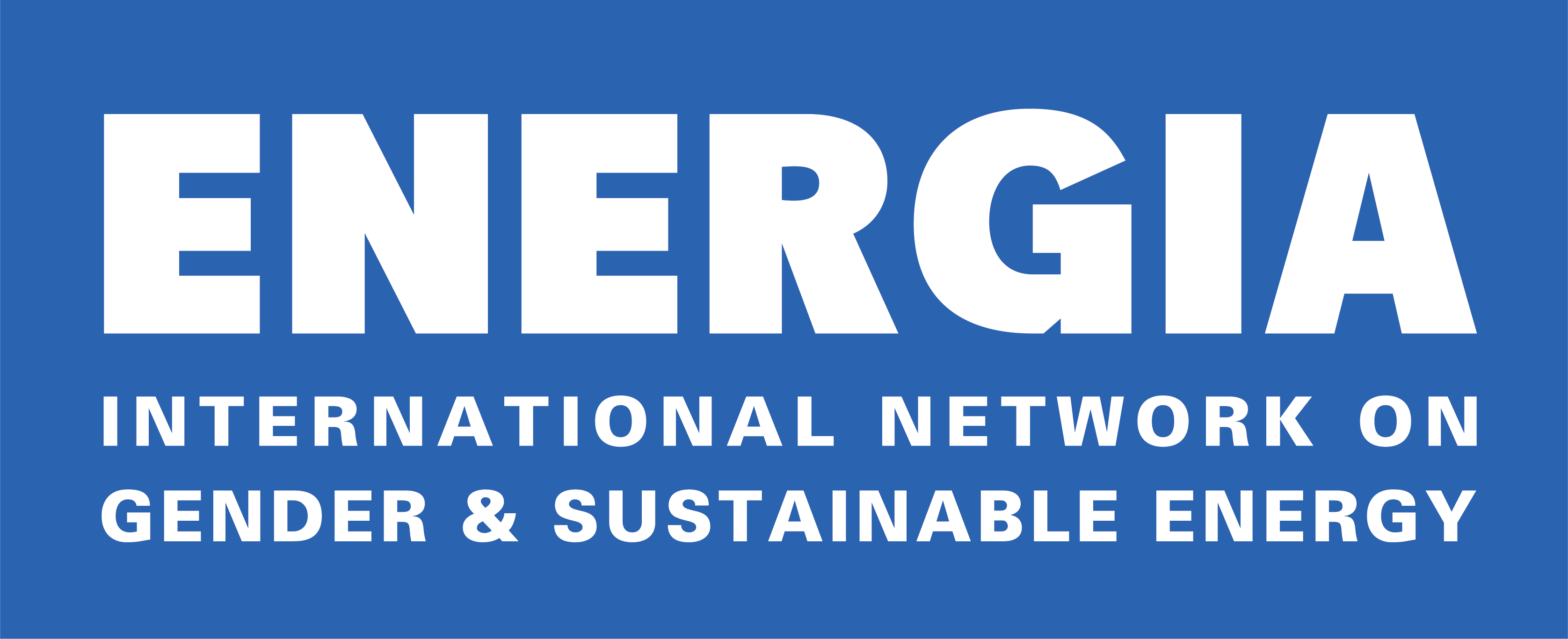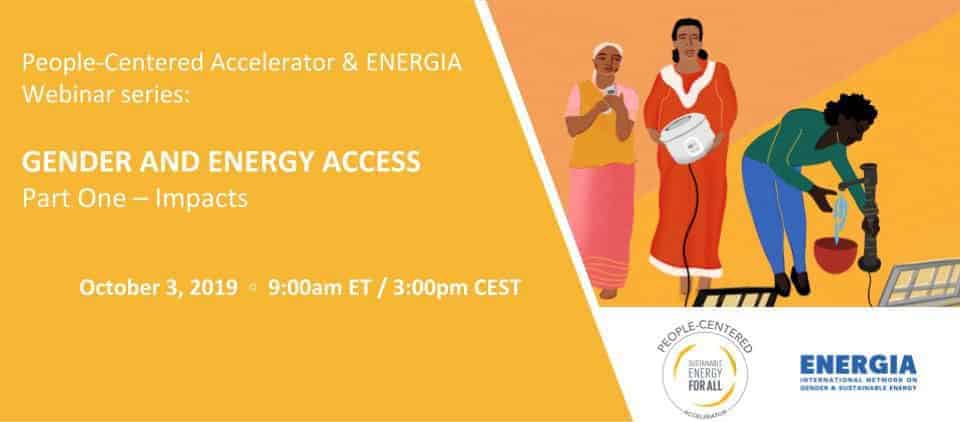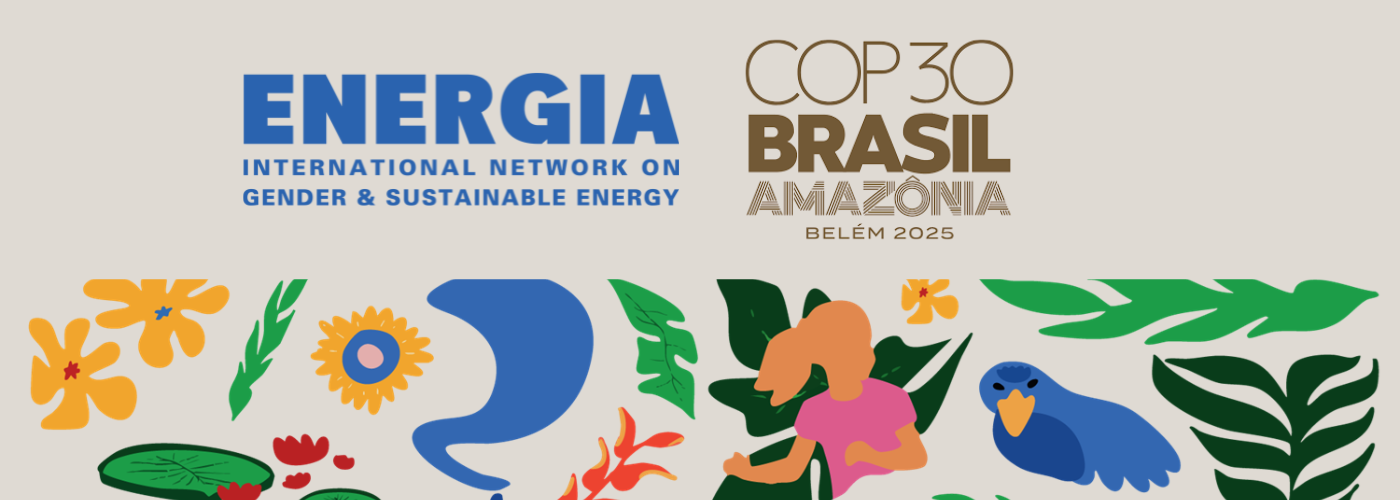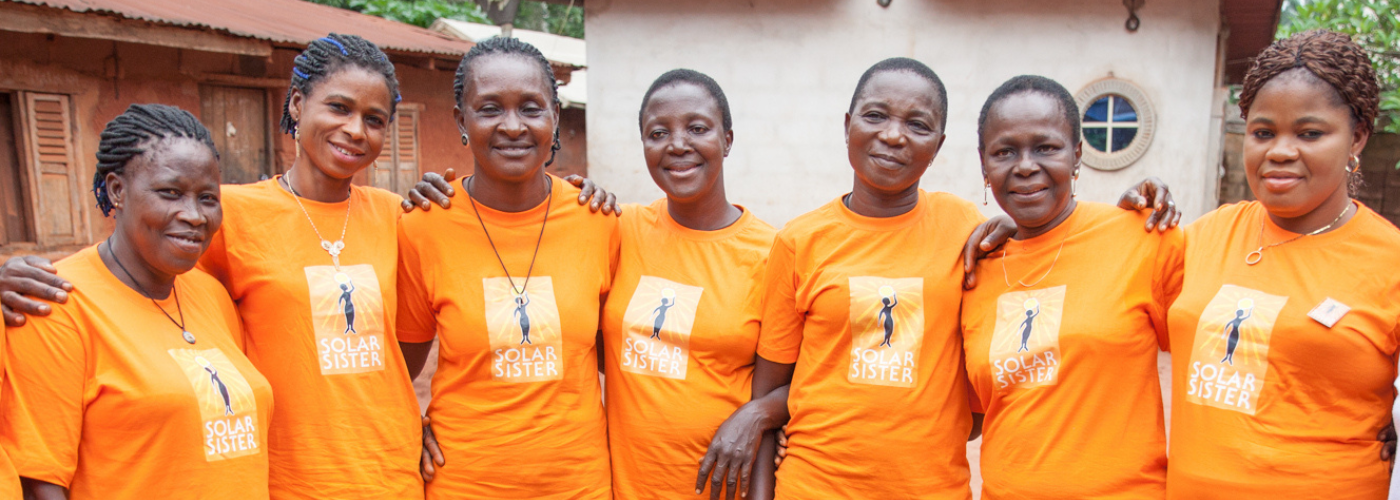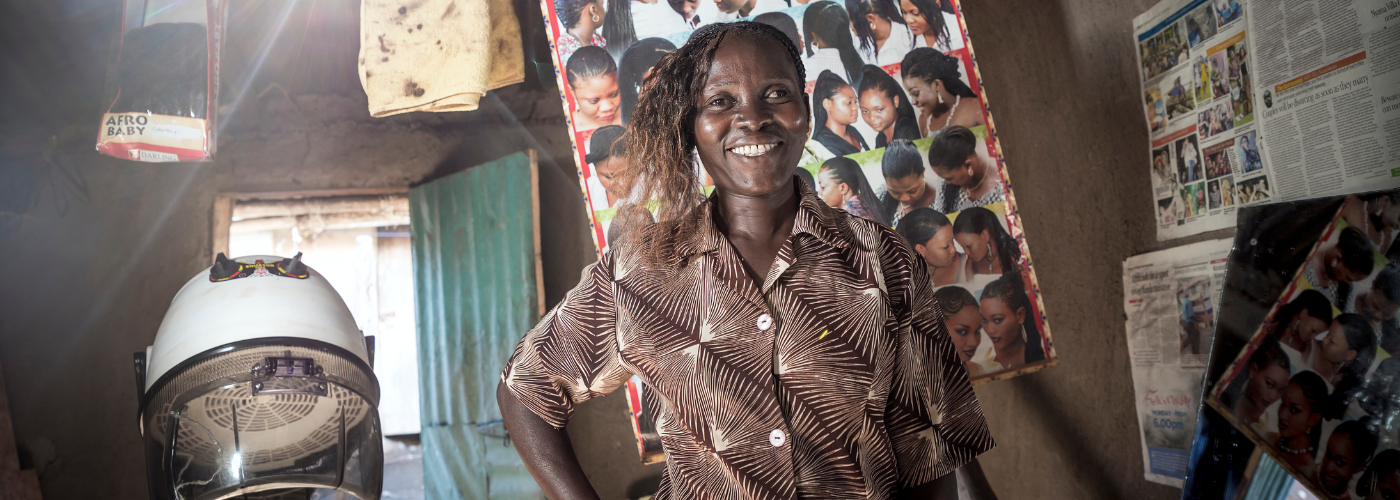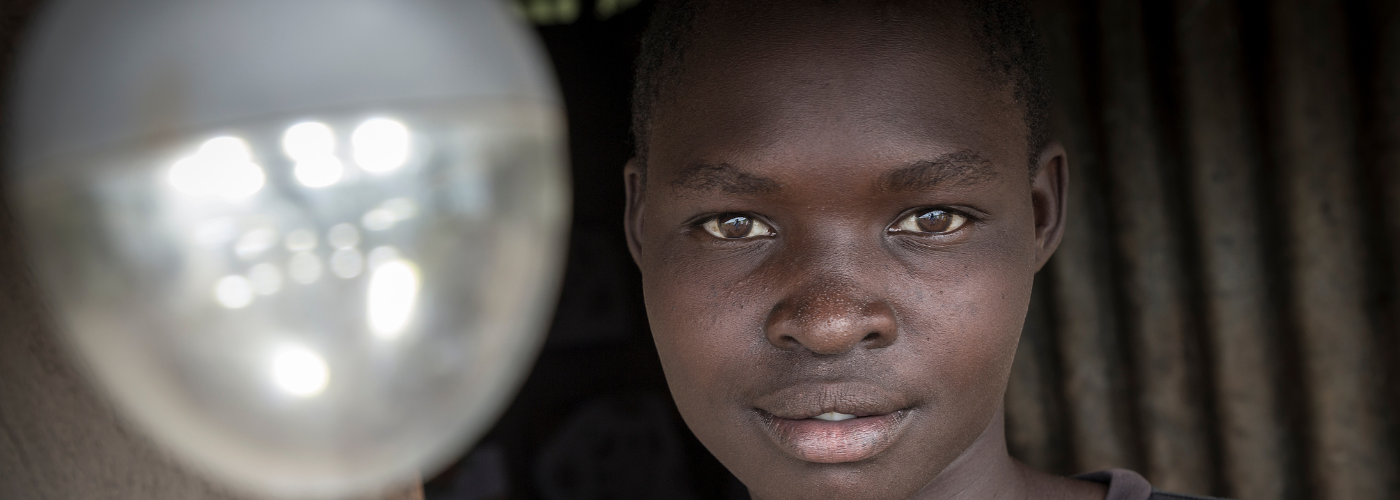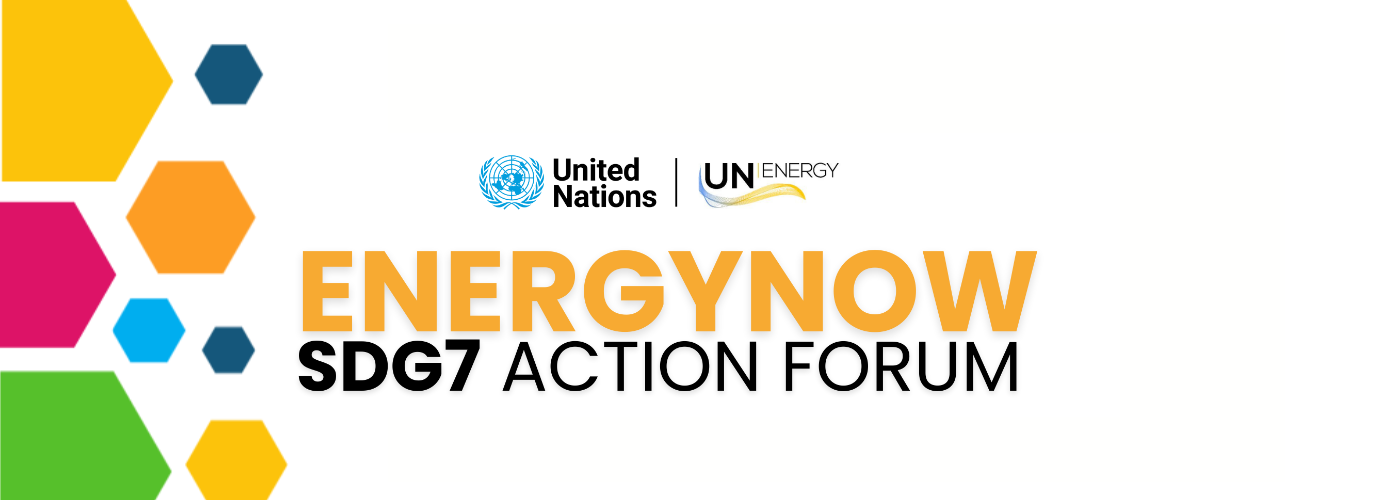On October 3, 17 and 31, ENERGIA and SEforALL’s People-Centered Accelerator, organised a three-part webinar series on Gender and Energy Access. The series focused on our five-year Gender and Energy Research programme (2014 – 2019). The last webinar included findings from our Women’s Economic Empowerment (WEE) Programme.
The research programme aimed to generate and analyse empirical evidence on the nexus between gender, energy and poverty, to inform energy policy and practice. Specifically, the research explored the linkages on gender, energy and poverty in six thematic areas:
- Electrification
- Productive uses of energy
- Energy sector reform
- The role of the private sector in scaling up energy access
- The political economy of energy sector policies
- Women’s energy entrepreneurship.
This programme was performed by nine teams involving more than 70 researchers, across 12 countries with the cooperation of 29 partner organisations. It was unique in its scale and first of its kind, urged by the need to reduce the existing research gap and have an extensive understanding based on evidence, beyond case studies. The findings are presented in seven reports and can be accessed on our website together with a synthesis report, which presents a prioritised selection of key messages and associated policy implications. Our publication “Supporting last-mile women energy entrepreneurs: What works and what does not” based on our WEE programme can also be found here.
In the webinar series, the presenters highlighted specific aspects of their studies and provided insights on the differentiated impacts of access to energy and energy services, policies and subsidies for women and men. In case you missed it, here’s a recap where we have summarised the key takeaways. The slides and the recording can be found here.
Webinar 1: Gender and Energy Access
Part One – Impacts
The first webinar provided evidence from three research areas ( RA1, RA3, RA4) on how access to energy, both electricity and clean cooking, impacts women and men differently and how policymakers can increase benefits for women.
Electrification, women’s opportunities and empowerment
Magi Matinga from Dunamai Energy presented the study carried out by the RA1 team on the factors that enhance or restrict women’s opportunities and empowerment through electrification, as users or supply actors. Both a qualitative and quantitative research was conducted across Kenya, India and Nepal. The data provided key findings on who has access to electricity, who decides on the access points and the appliances to get, and who has the control of electricity and appliances. In Kenya, for example, women and men take decisions together. However kitchens, where women spend hours cooking and cleaning , have less lighting compared to any other rooms. Therefore, making a decision together on energy doesn’t necessarily address women’s needs. On the other hand, in India where women had less decision-making power, more households had a light in the kitchen because the regulations stipulated installers had to do this by default. This shows the need to ensure that policy and regulations address women’s needs.
Women’s involvement in the electricity supply chain benefits their social empowerment, increase their self-confidence and changes men’s perception of women’s capabilities. The use of electricity leads to an increased attention to family planning, an increased choice in future job opportunities due to TV shows, choice in marriage partners due to the increased use of TV and social media. It has also been found that women save time in household chores or activities, due to the use of rice cookers, mills and blenders.
The research includes recommendations on what can be done to ensure a more equitable access to electricity:
- Gender-specific support for marginalised groups including women
- Enhance gender consciousness among users and communities, and responsiveness among installers/utilities
- Ecosystem approach and working with men and women to increase women’s power
- Pragmatic selection, medium to long term support for inclusion in supply chains, possibly for productive uses too
- Intersectional approach in gender research. It is important to not just look at women and men, but also to recognise that women are not a uniform group and that this reflects in their energy needs and level of access to energy services (widows, married women, girls, elderly).
More women’s empowerment through a gendered approach?
The second presenter, Govind Kelkar, presented the RA3 research, which focuses on the political economy perspective and answers to the question: Does a gender responsive approach provide a greater empowerment to women and girls than traditional approaches (based on the household) in the energy sector? In looking at modern energy services across two countries, India and Nepal, the research distinguishes three levels of analysis—that of the availability at the macro or national level, of access at the meso or community and household level, and of use at the level of the individual woman. In each of these spheres, i.e. availability, access and use, the research looked at the role of women and gender relations.
The research notes that gendered norms and attitudes change with ownership of land, house, energy equipment and new technologies. It also highlights that changes in gendered norms and attitudes could increase access to energy services and energy choices for women. The research has found that policy for delinking the status of a farmer from land ownership is pivotal in recognition of all women (and men) engaged in farming as farmers, The study shows that in the case of cooking, the undervaluation of women’s domestic labour likely reduces the adoption of labour-saving clean cooking systems. In agriculture, this results in the observed low mechanization of women’s tasks. Lastly, social norms also change when women are organised/self–organised in groups. Therefore, it is critical to bring in women’s collectives in order to expand energy access and transition to clean energy.
Subsidy reform and its impact on women
The third presentation by Laura Merril and Shruti Sharma from GSI-IISD delved into the RA4 study which looks at the impact of subsidies and reform to kerosene and liquefied petroleum gas (LPG) from a gender perspective across three countries (Bangladesh, India and Nigeria). The research reveals five overarching findings. First, overall fuel subsidies are not working well for poor women. Second, better targeting of support for energy access is needed and possible. Third, subsidy reform needs to be undertaken with care, and mitigation measures are needed to protect poor women. Fourth, other factors, such as education, could be significant for fuel switching and better access to cleaner fuels for women. Lastly, investing in subsidy alternatives could empower women more directly.
Considering India’s LPG subsidy (PMUY and PAHAL), the research shows that PMUY, which requires all beneficiaries to be female household members, may have positive impacts for women in low income households. The registration for the scheme requires certain documentation, such as a registered bank account and eventually, a mobile phone to facilitate payments. This may help drive women’s access to financial services and mobile phones, creating important spill-over benefits. However, women may be less likely to possess this documentation, so designing the PMUY in this way might cut off certain households who would otherwise register through a male household member. The PMUY subsidy covers part of the cost for an initial LPG connection but it was found that it doesn’t lead to a complete switch to and use of LPG. Beyond the positive outcomes from LPG usage for poor women who can access LPG subsidies, such as time savings, reduced exposure to harmful indoor air pollution, many women still cannot access the subsidy – 50% of the households from the sample did not use LPG in their energy mix. Much could be improved. First, better targeting of LPG subsidies is needed. Second, a review of subsidies is needed to ensure the poorest can afford a new connection. Under the design of the current PMUY loan scheme there is an option of a loan to pay for the subsidies registration, but this effectively increases refill prices during the loan payback period. Third, improve education and raise awareness on alternative clean cooking options is crucial.
The slides and the recording of this webinar can be found on our website. You can read the key takeaways from the second webinar here and from the third webinar here. More information on the research teams involved in this webinar can be found here.
